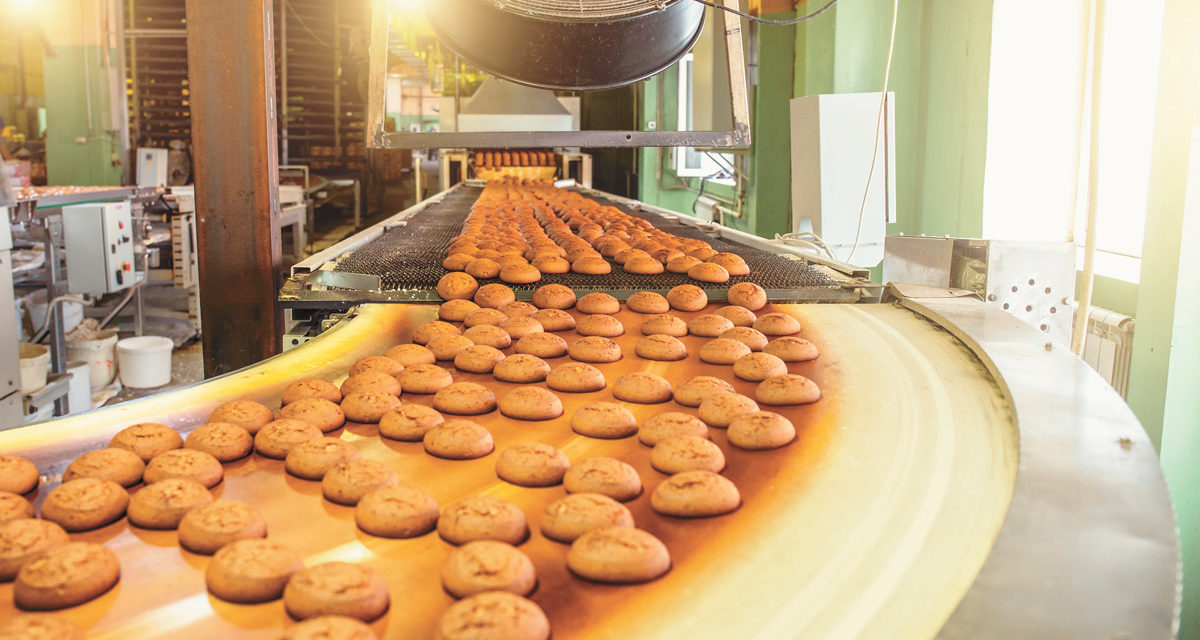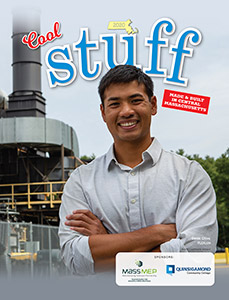A look inside Connecticut’s sweet shops
Stuff made in Connecticut may no longer be produced in dark, dingy, 19th-century plants nestled on riverbeds, but that doesn’t mean that the word manufacturing doesn’t still render images of shop floors and production lines.
Unless, of course, you’re talking about chocolate.
The candy sector may not be the state’s largest industry, but it’s one that’s picking up speed. Just take it from some of Connecticut’s finest chocolatiers.
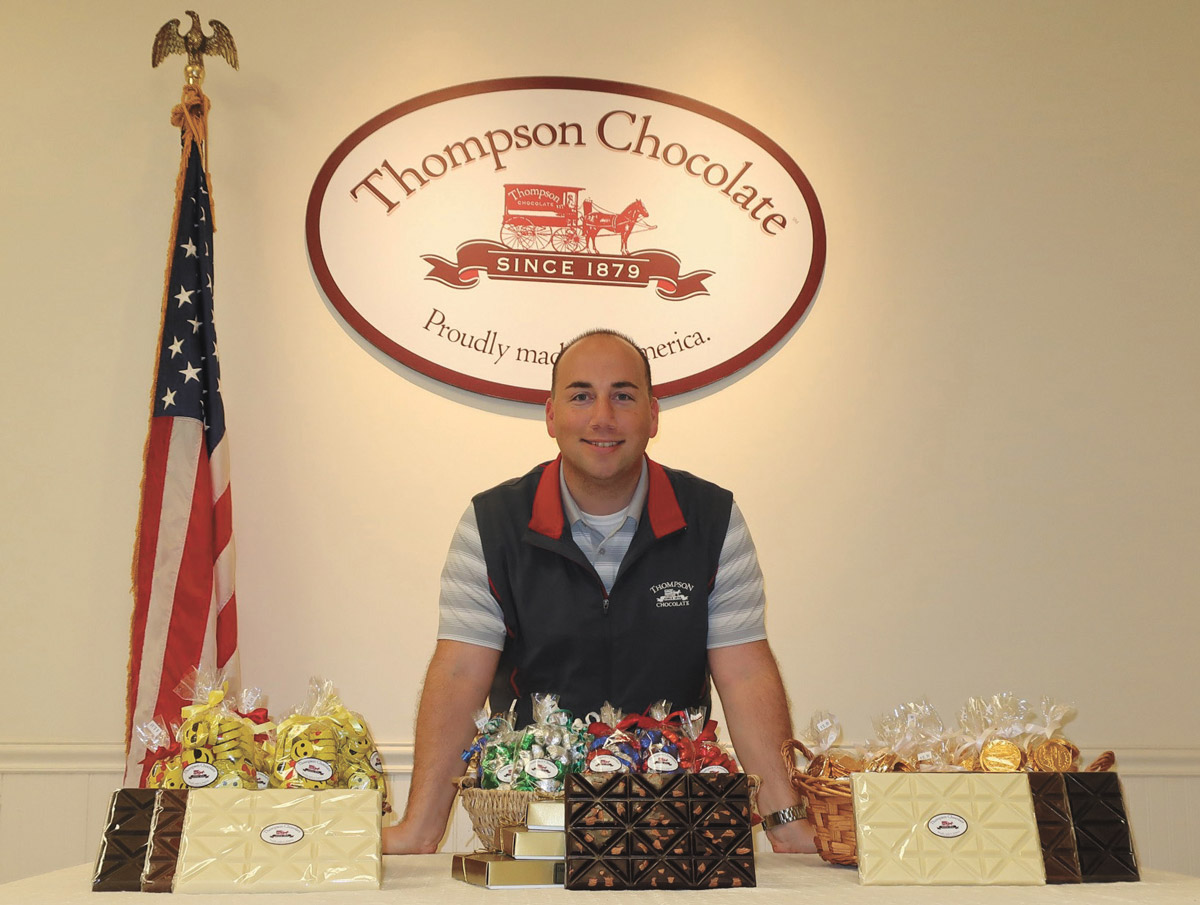
Meriden Mayor Kevin Scarpati started working for Thompson Brands after doing some marketing work for them.
Thompson Brands
Kevin Scarpati, Meriden city mayor, first fell in love with the candy business after touring the facility at Thompson Brands. The company originally brought him in to help them better coordinate their community outreach efforts, but quickly decided he would be more valuable in-house.
“It’s amazing to work for a company, born right here in Meriden, that’s grown into a globally recognized brand, operating out of a 120,000-square-foot building and employs 190 people,”
— Kevin Scarpati
“We just clicked,” said Scarpati. “We were both just really impressed by one another. At first, I was just helping them with marketing. It was a good fit. I was able to use my political knowledge to boost brand visibility within our community.”
Three short months later, Scarpati was promoted to manager and today he leads Thompson’s brand-expansion initiatives into larger, global markets.
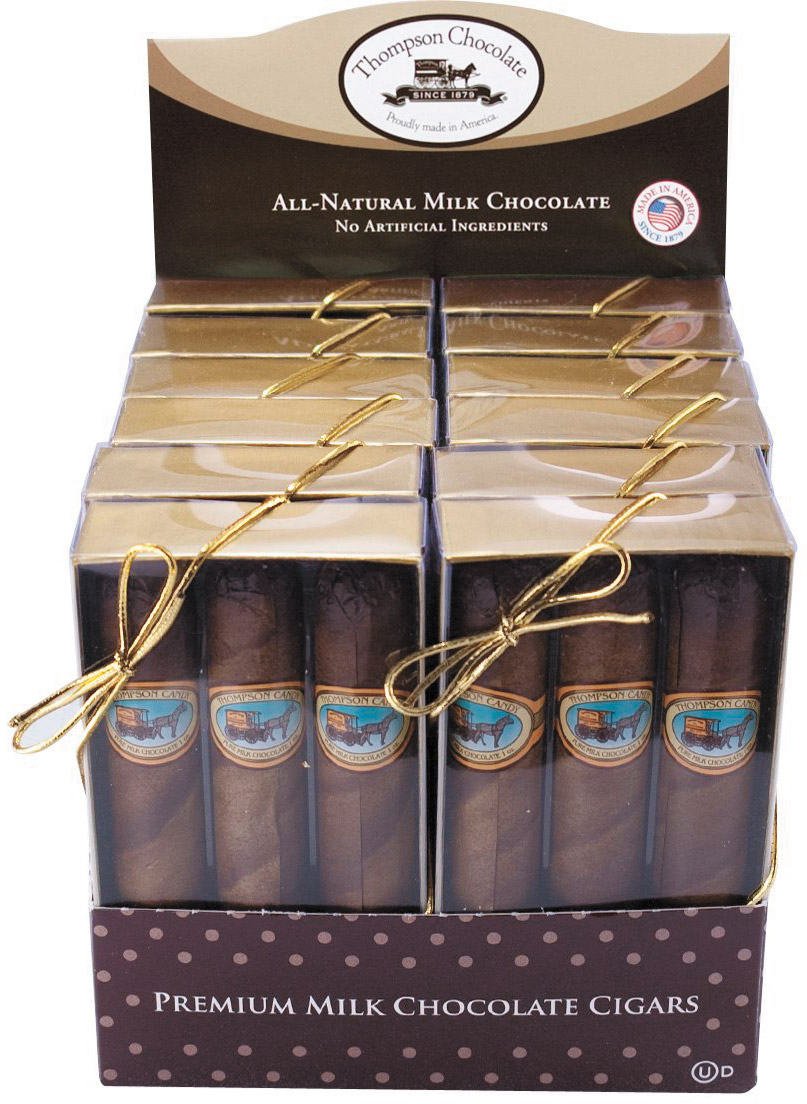
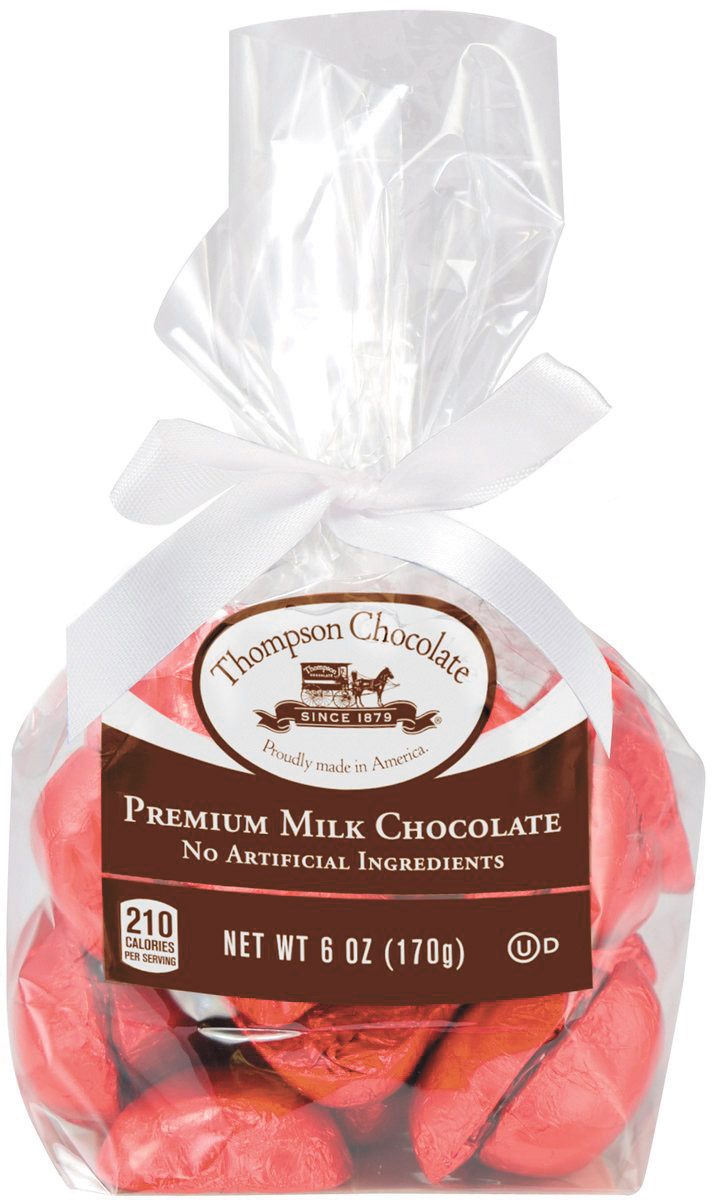
Two of Thompson’s chocolate products.
Scarpati admits he’s not your average 29-year-old. This mayor, chocolatier and marketing muscle, says you can often find him burning the midnight oil, juggling his responsibilities as mayor with his role at Thompson. That being said, he says he gets great joy out of his role with the company.
“People really enjoy our products. It’s also neat to see how the business has grown from Meriden’s first candy store to the global brand it is today. Plus, not many people get to say they work for a chocolate company.”
Thompson Brands, founded in 1879, creates molded, foil-wrapped chocolates using no artificial ingredients. Its biggest market is in private label and, according to Scarpati, the company employs many female and minority workers – something he says is a testament to the company’s forward-thinking culture and global vision.
“It’s amazing to work for a company, born right here in Meriden, that’s grown into a globally recognized brand, operating out of a 120,000-square-foot building and employs 190 people,” Scarpati said.

Le Rouge Chocolates by Aarti
Like Scarpati, Bonya Kleyman stumbled into the chocolate business. The Norwalk native, who graduated from Staples High School in 2016, was given the opportunity to work in the candy industry when selecting her mandatory high school internship. Little did she know, working for Le Rouge Chocolates by Aarti would change the trajectory of her life forever.
“I knew I wanted to work in the food industry. It’s something I’m very passionate about,” said Kleyman. “I felt like Le Rouge was the perfect place to get my feet wet.”
Kleyman worked with Aarti Khosla, founder of Le Rouge Chocolates, for a month and a half during her senior year of high school. She was given responsibilities ranging from forming the chocolates, to email marketing, to photography.
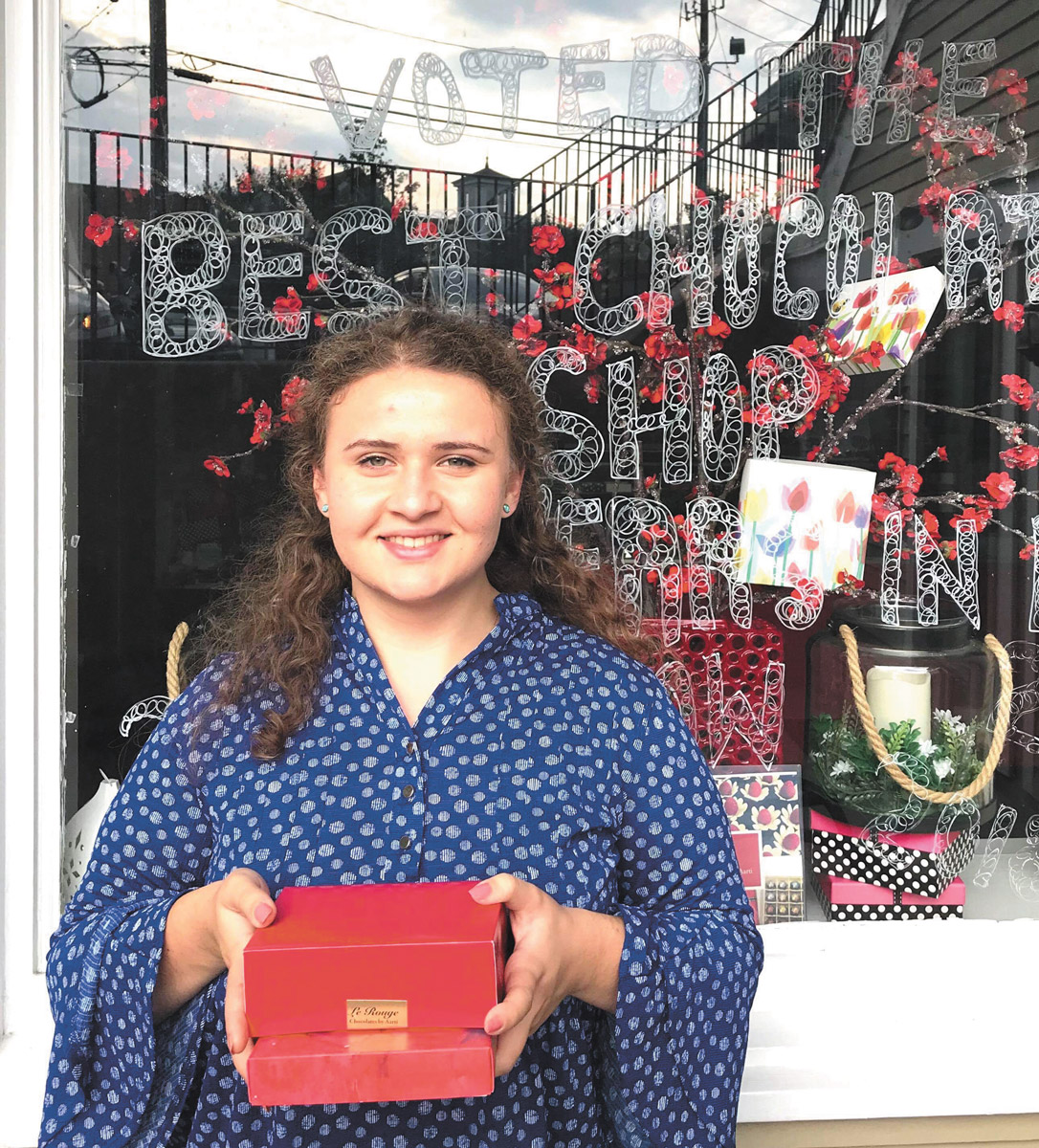
Bonya Kleyman (above) started working for Le Rouge Chocolates by Aarti (top) during a high school internship.
“Not only is Aarti an incredible boss, she’s an inspiring artisan,” said Kleyman. “She channels her international experiences and her Indian culture into creating fresh, highly detailed artisanal chocolates created in small batches using fair-trade dark chocolate.”
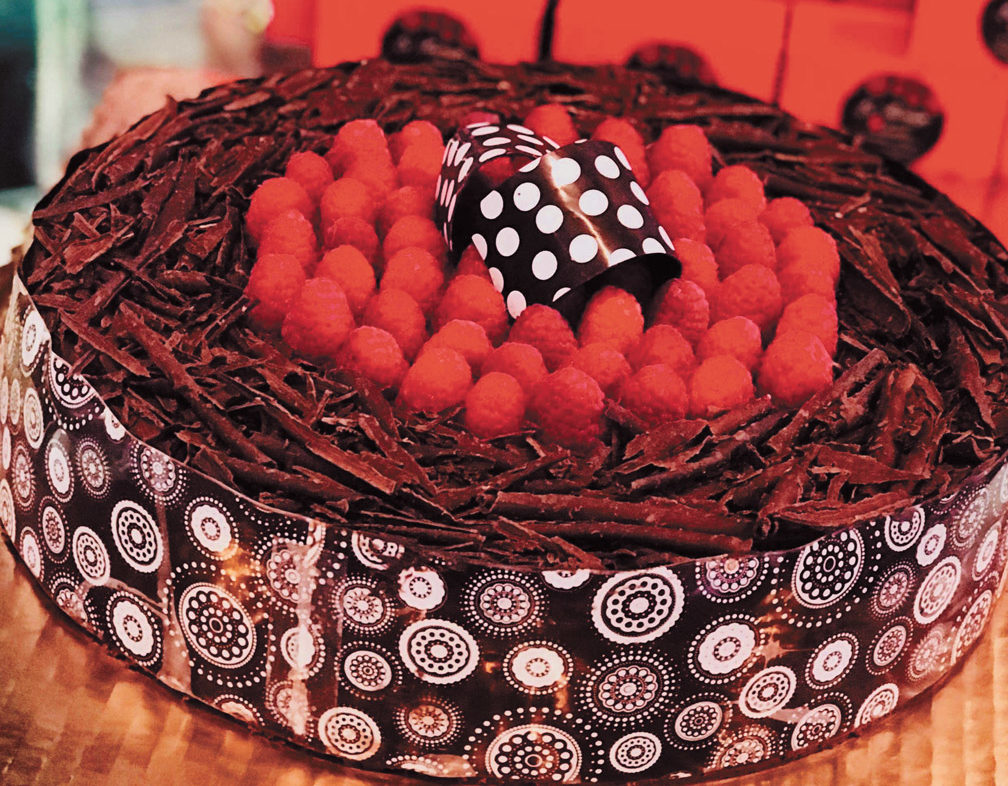

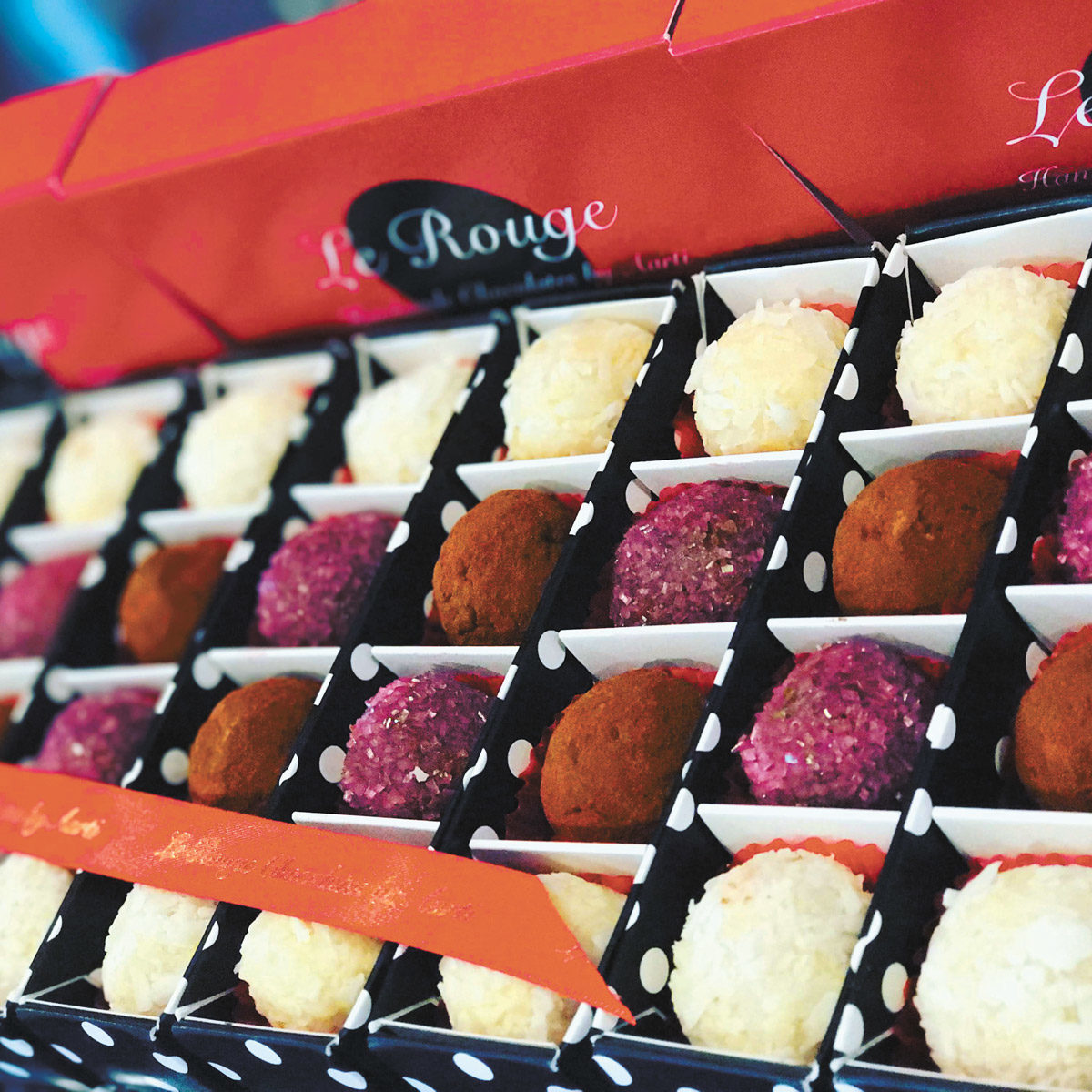
Aarti Khosla’s chocolates are made individually and with great care.
Each batch of Le Rouge chocolates is hand-painted and decorated with great care, something Kleyman found to be overwhelmingly inspiring.
“She’s keenly interested in the details and has a vast knowledge of chocolate manipulation and creative methods,” Kleyman said. “Working with her has made me passionate about the process as well.”
Khosla’s intricate eye was one of Kleyman’s favorite things about working for her.
“Each product is made by a different process, one may have a gilded coating and another may be formed inside a champagne flute, each treat has its own unique element,” Kleyman said.
Kleyman said working with Aarti inspired her to pursue a career in the food industry, specifically as a food critic. She’s studying linguistics and Japanese at Newcastle University in the United Kingdom, a journey she says, without a doubt, started at Le Rouge.
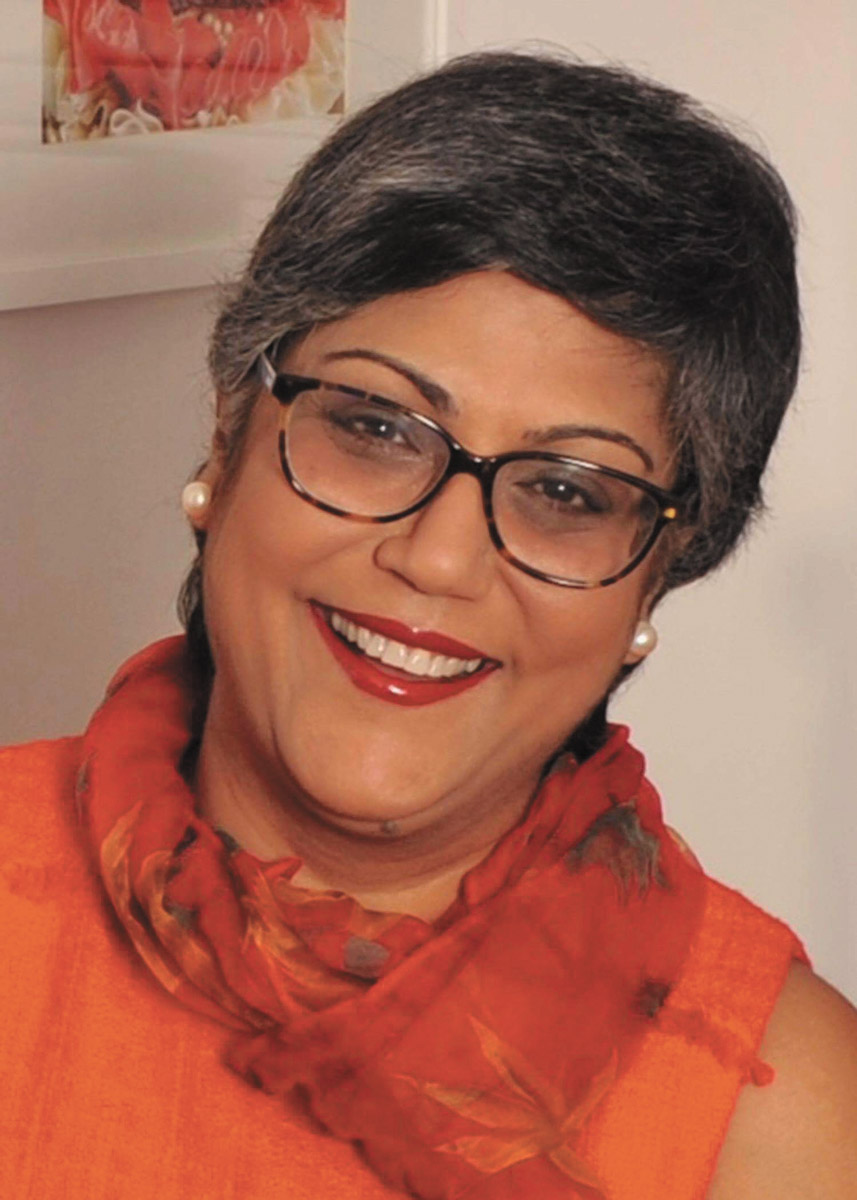
Aarti Khosla
Founder, Le Rouge Chocolates

Truffle Shots
Where many stumble into the sweets business, others have chocolate running through their veins. One such other is Lauren Athay, the 29-year-old co-founder of Truffle Shots.
Truffle shots is known for its truffles where the hard-outer casing is replaced by a shot glass. Pouring the gooey ganache into the glass allows for immediate access to, according to Athay, the only part of the truffle worth having.
Athay and her mother, Sherri, came up with the idea of Truffle Shots after much deliberation over the hard-shell dilemma. One day, during a casual shopping trip, Athay spotted the glasses.
“All I said was, ‘Wow! Wouldn’t those be beautiful with chocolate in them?’ and immediately my mom was like ‘Truffle Shots!’ We went home, applied for a trademark and patent, bought a web domain, and started experimenting … all in one night,” Athay said.

Lauren Athay
Co-founder, Truffle Shots
Athay was 21 when she helped her mom start Truffle Shots. At the time, she was enrolled at Virginia University and unsure if philosophy, film production or business should be her declared major.
“I always had a wide variety of interests, and I always loved chocolate. I guess it’s a good thing that I ended up with Truffle Shots full-time,” Athay said.
While at school, Athay played an active role in the company, strategically planning with her mother, consulting on flavors and packaging, anything she could do remotely. When she graduated with a degree in philosophy, she jumped straight back into the family business, full-time.
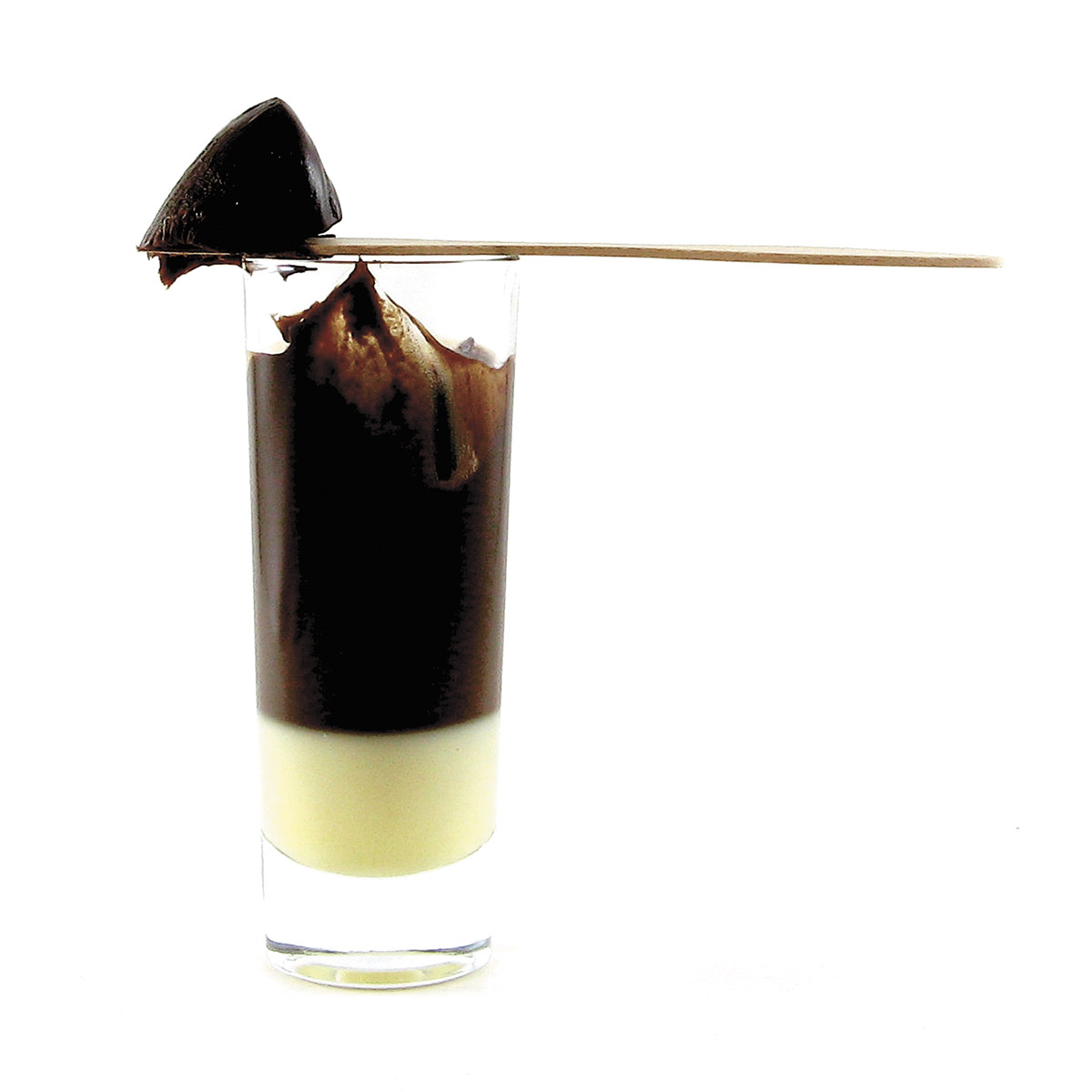
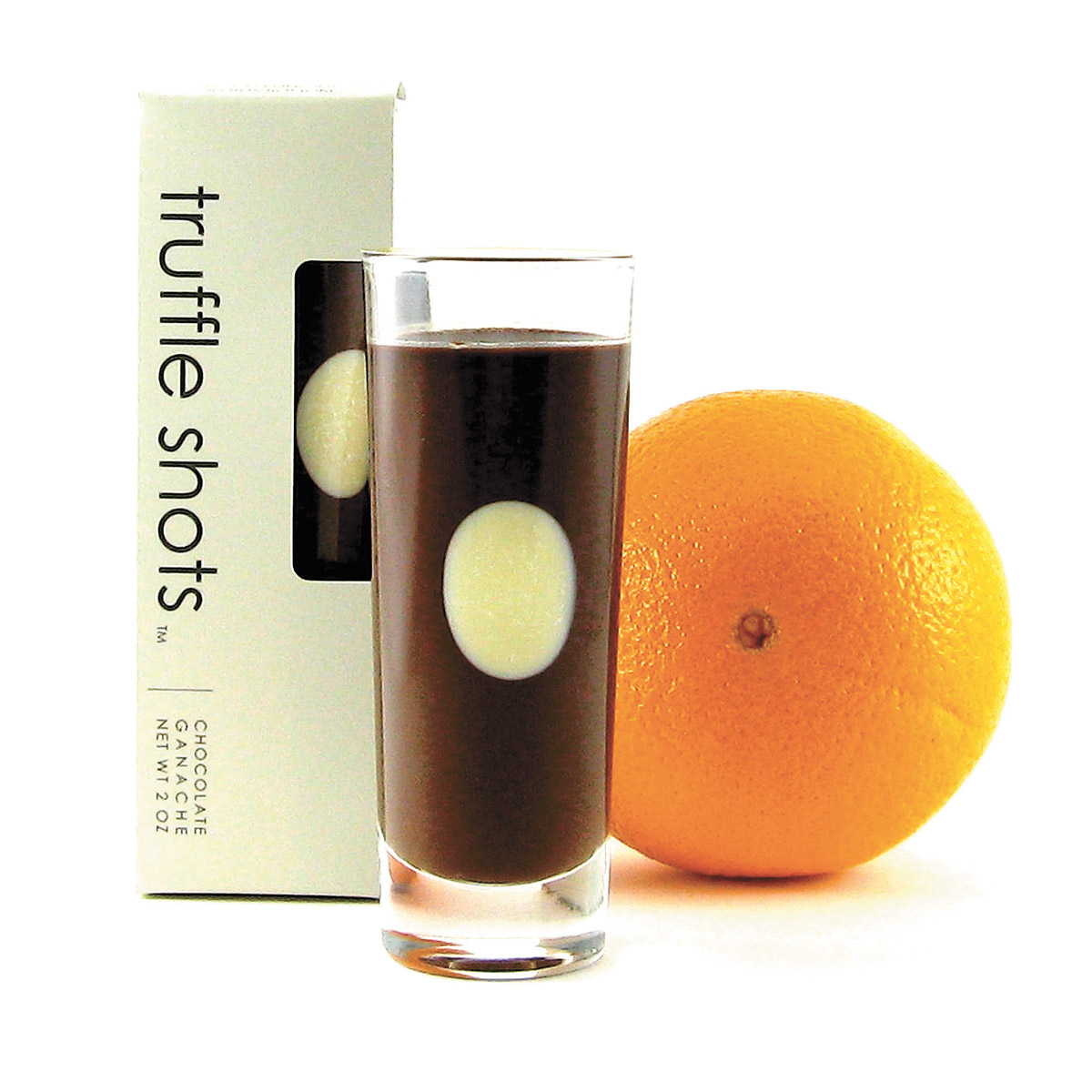
“Now I help with production as well as client consultations,” Athay said. “We just had a group come in to book an order for their wedding, so I helped them decide how to best to incorporate the treats.”
Athay’s favorite thing about working with chocolate is the experimentation and the satisfying process of transforming an idea into a physical object.
“I can’t believe that this is my job. I love learning, and there is so much more to chocolate than I initially realized. From fermentation to roasting and bean origin, there are so many variables that can change the taste and texture of the product,” Athay said.
According to Athay, the craft movement (bean to bar) has exploded in the last 10 years, and she’s really excited to be part of a growing industry.
So next time you think about manufacturing, don’t forget that the industry includes sweet-toothed chocolate connoisseurs. Their factories are brightly lit, white aprons tossed over chairs, edible experimentations littered across chrome tables. Both customers and the smell of confections are welcomed to linger. These are Connecticut’s sweet shops.

